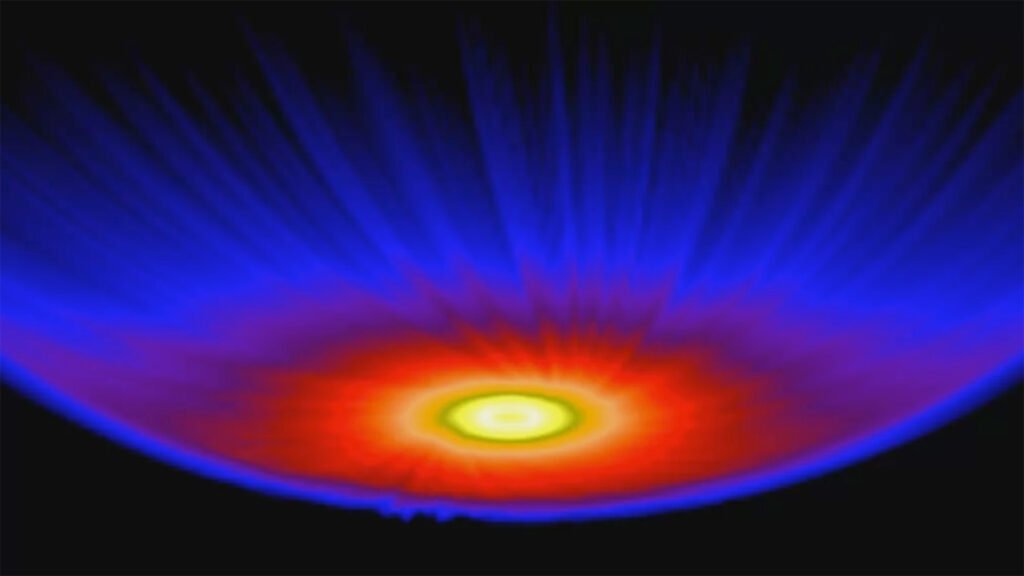[ad_1]
BOSTON — For the primary time, astronomers have detected an astrosphere round a star just like the solar.
This bubble of scorching gasoline is blown by a star’s stellar wind, a continuing stream of charged particles each star emits. The solar’s model of this bubble, referred to as the heliosphere, marks the sting of our photo voltaic system and protects the planets from many of the high-energy cosmic rays that zip concerning the galaxy (SN: 12/10/18, SN: 10/15/09).
Astronomers have seen analogous bubbles round scorching stars, dying stars and child stars — however not sunlike stars.
“We don’t see them round … common, on a regular basis stars that may host life,” mentioned astronomer Carey Lisse on the 25 Years of Science with Chandra symposium on December 3. “For 20 years, we’ve been on the lookout for this impact, and haven’t seen it.”
Lisse and his colleagues sought a star that was blowing further onerous. The researchers aimed the orbiting Chandra X-Ray Observatory at HD 61005, nicknamed The Moth as a result of it’s surrounded by a swept-back particles disk that resembles wings. Astronomers suppose the unusual form is as a result of the star is plowing right into a dense gasoline cloud in area at a velocity of about 10 kilometers per second (SN: 1/22/08).
The Moth is the same dimension and mass because the solar, so “it’s a comparatively good consultant of us,” mentioned Lisse, of the Johns Hopkins Utilized Physics Laboratory in Laurel, Md. However it’s a 100-million-year-old teenager in comparison with the 4-billion-year-old solar. Youthful stars are typically extra lively and emit stronger photo voltaic winds than older ones. That further exercise, plus the star’s motion by way of the interstellar medium, made Lisse suppose the Moth was goal for detecting an astrosphere.
The observations confirmed that the Moth is surrounded by a halo of X-ray mild extending 100 occasions as removed from the star as Earth is from the solar. That mild is the astrosphere, Lisse mentioned.
Surprisingly, the bubble is spherical fairly than wing-shaped. Which means the wind is so robust, it pushes outward on the dense gasoline cloud greater than the cloud pushes again, like a thick balloon transferring by way of skinny air.
Learning the astrospheres of different sunlike stars can inform us what the solar was like in its youth, Lisse says. “We had been like this as soon as,” he says. “The astrosphere is telling us concerning the solar’s historical past.”
Information Abstract:
- Astronomers detect the primary astrosphere round a sunlike star
- Examine all information and articles from the newest Space updates.
- Please Subscribe us at Google News.
[ad_2]
Source link
